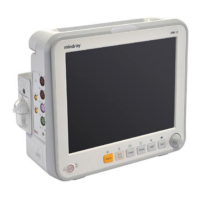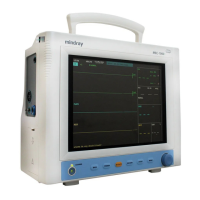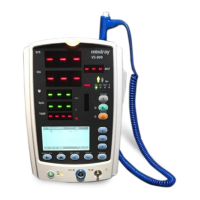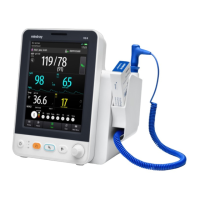14-5
14.5.3 Changing Averaging Time
The IBP value displayed on the monitor screen is the average of data collected within a
specific time. The shorter the averaging time is, the quicker the patient monitor responds to
changes in the patient’s blood pressure. Contrarily, the longer the averaging time is, the
slower the patient monitor responds to changes in the patient’s blood pressure, but the
measurement accuracy will be improved. For critically ill patients, selecting shorter
averaging time will help understanding the patient’s state.
To set the averaging time, in the setup menu for the pressure, select [Response] and toggle
between [High], [Med] and [Low]. The corresponding averaging time is about 1 s, 8 s and
12 s respectively.
14.5.4 Setting the Pressure Unit
In the setup menu for the pressure, select [Unit] and toggle between [mmHg], [cmH
2
O]
and [kPa].
14.5.5 Setting Wave Overlapping
When two or more IBP channels are used, you can have IBP waves overlapped in the same
area for a better view.
In the waveform menu for the pressure, set [Wave Overlapping] as [On].
14.5.6 Setting Up the IBP Wave
In the waveform menu for the pressure, you can:
Change the size of the pressure’s waveform by adjusting [Upper Scale], [Middle
Scale] or [Lower Scale].
When [Auto Scaling] is set on, the size of the pressure’s waveform will be adjusted
automatically.
When IBP waveforms are overlapped, you can select the overlapped waveforms to enter the
[Overlap IBP Waves] menu. In the [Overlap IBP Waves] menu, you can:
In the [Arterial Pressure] and [Venous Pressure] area, adjust [Upper Scale],
[Middle Scale] or [Lower Scale].
In the [Select Wave] area, select the IBP waveforms you want to overlap.

